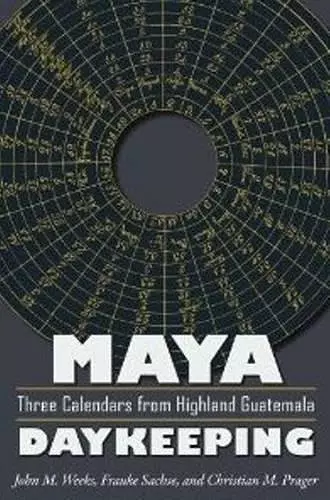Maya Daykeeping
Three Calendars from Highland Guatemala
John M Weeks editor Frauke Sachse editor Christian M Prager editor
Format:Paperback
Publisher:University Press of Colorado
Published:15th May '13
Currently unavailable, our supplier has not provided us a restock date

In Maya Daykeeping, three divinatory calendars from highland Guatemala - examples of a Mayan literary tradition that includes the Popul Vuh, Annals of the Cakchiquels, and the Titles of the Lords of Totonicapan - dating to 1685, 1722, and 1855, are transcribed in K'iche or Kaqchikel side-by-side with English translations. Calendars such as these continue to be the basis for prognostication, determining everything from the time for planting and harvest to foreshadowing illness and death. Good, bad, and mixed fates can all be found in these examples of the solar calendar and the 260-day divinatory calendar.The use of such calendars is mentioned in historical and ethnographic works, but very few examples are known to exist. Each of the three calendars transcribed and translated by John M. Weeks, Frauke Sachse, and Christian M. Prager - and housed at the University of Pennsylvania Museum of Archaeology and Anthropology - is unique in structure and content. Moreover, except for an unpublished study of the 1722 calendar by Rudolf Schuller and Oliver La Farge (1934), these little-known works appear to have escaped the attention of most scholars. Introductory essays contextualize each document in time and space, and a series of appendixes present previously unpublished calendrical notes assembled in the early twentieth century. Providing considerable information on the divinatory use of calendars in colonial highland Maya society previously unavailable without a visit to the University of Pennsylvania's archives, Maya Daykeeping is an invaluable primary resource for Maya scholars. Mesoamerican Worlds Series
"[T]he authors' work is truly groundbreaking. Once more, this kind of detailed investigation of hitherto largely ignored materials . . . should serve as a fine example to all historians of science." —Benjamin B. Olshin, Isis
"This volume makes available priceless documents about the Maya of highland Guatemala. Their transcription and translation conserves vital legacies of Maya thought, conservation even more critical in light of the especially brutal repression and violence against Maya peoples in recent decades. . . . The three calendars are—individually and collectively—invaluable resources for scholars." —Wendy Ashmore, University of California Riverside
ISBN: 9781607322467
Dimensions: 229mm x 152mm x 18mm
Weight: 391g
236 pages